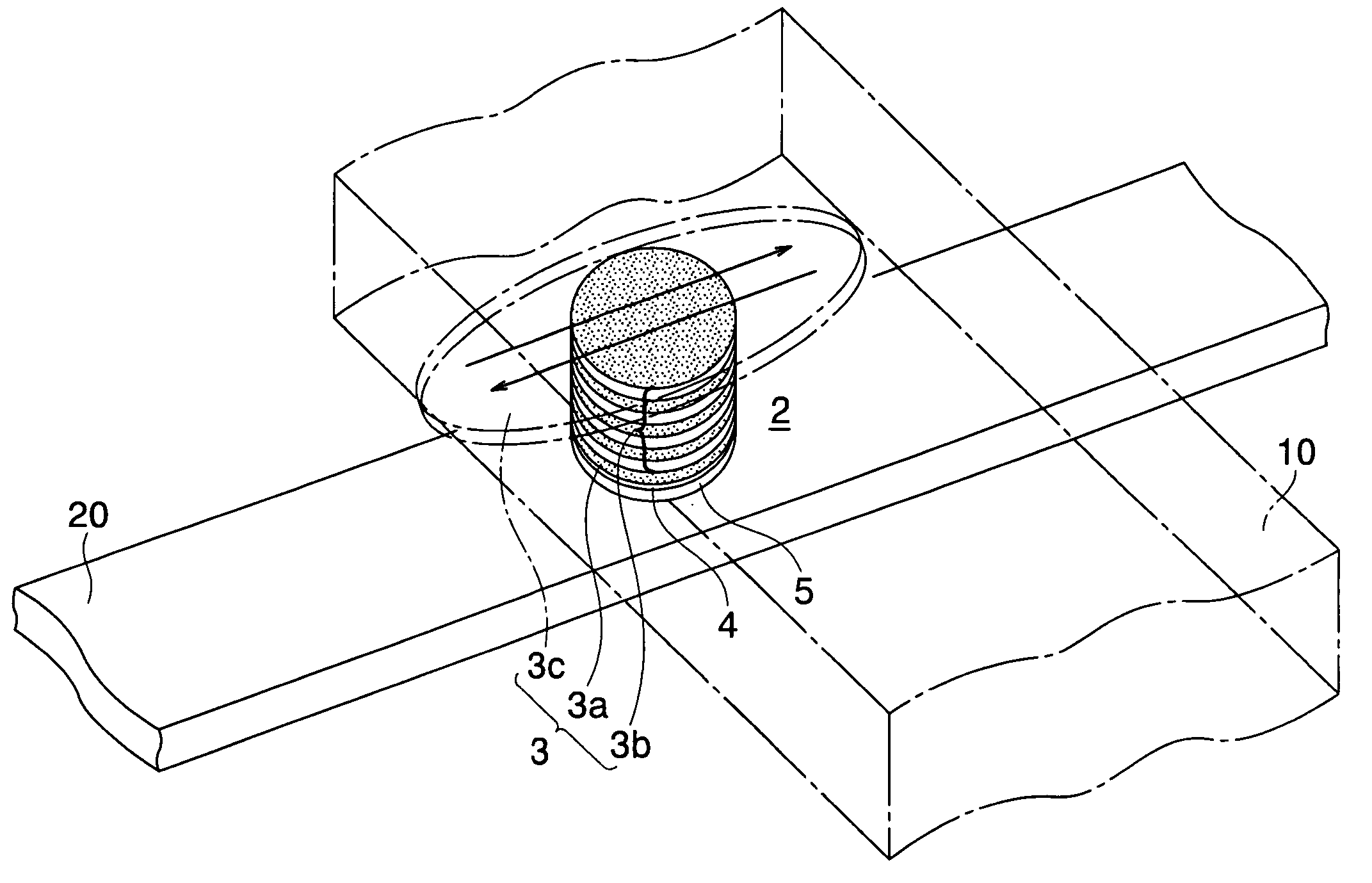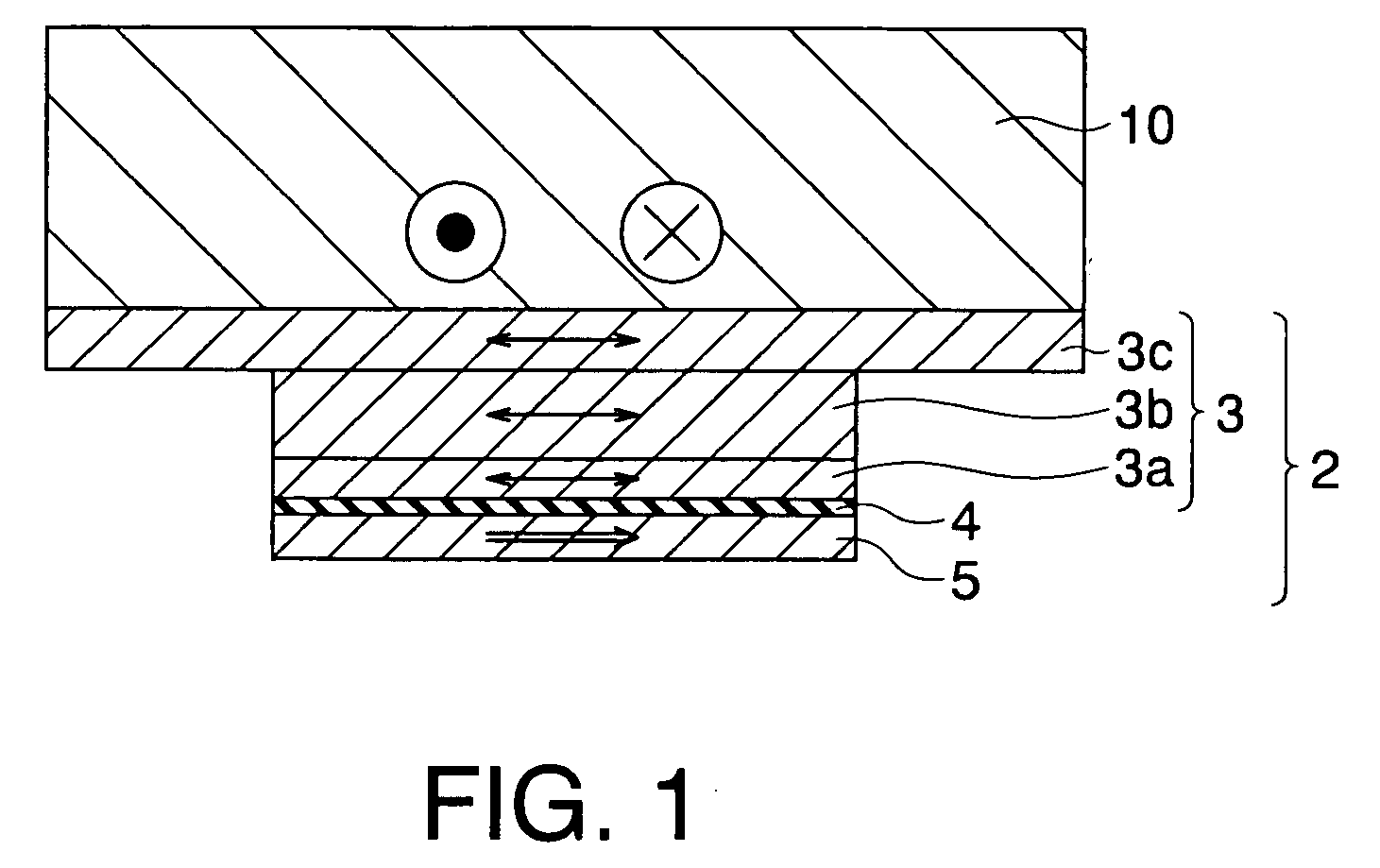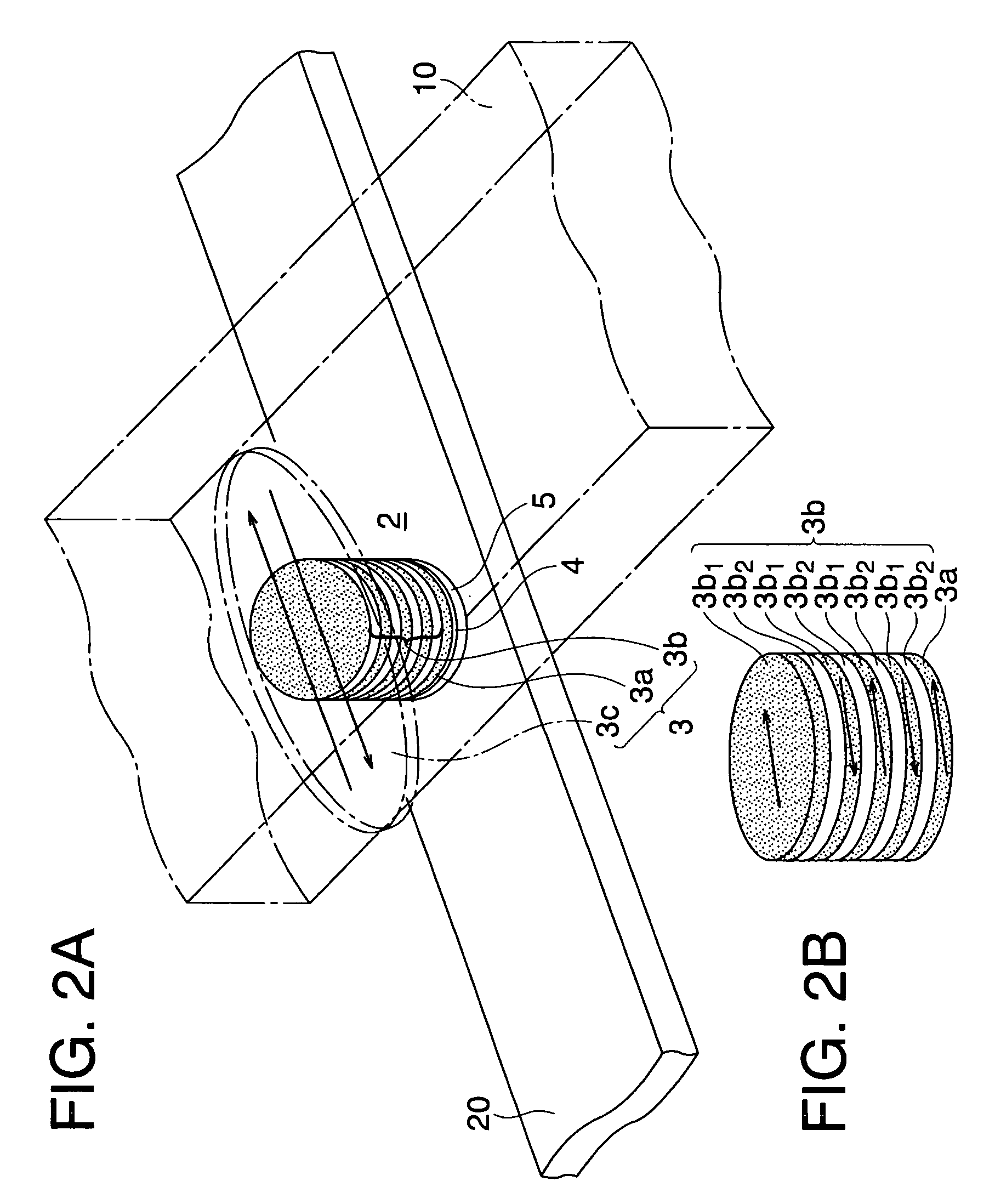Magneto-resistance effect element, magnetic memory and magnetic head
a technology of magneto-resistance and effect elements, applied in the field of magneto-resistance effect elements, magnetic memory and magnetic head, can solve the problems of inability to reduce cells to the size, inability to achieve mass storage, and large power consumption
- Summary
- Abstract
- Description
- Claims
- Application Information
AI Technical Summary
Benefits of technology
Problems solved by technology
Method used
Image
Examples
third embodiment
[0107] Next, a magnetic memory according to a third embodiment of the present invention will be explained with reference to FIGS. 15A and 15B. FIG. 15A is a view showing a structure of a unit memory cell of a magnetic memory according to this embodiment and FIG. 15B is a sectional view of the unit memory cell taken along line A-A shown in FIG. 15A. A magnetic memory according to this embodiment is constituted such that the yoke 8 provided on the bit line BL also extends on side portions of the bit line BL shown in FIGS. 14A and 14B in the magnetic memory according to the second embodiment shown in FIGS. 14A and 14B. Thereby, a writing current can be further reduced as compared with that in the second embodiment. Incidentally, the T-shaped magnetization free layer of the TMR element 2 and the yoke are not connected to each other, and a magnetic interaction therebetween does not occur while no current flows in the bit line BL.
[0108] The magnetic memory according to this embodiment of ...
fourth embodiment
[0109] Next, a magnetic memory according to a fourth embodiment will be explained with reference to FIGS. 16A and 16B. FIG. 16A is a sectional view showing a structure of a unit memory cell in a magnetic memory according to this embodiment, and FIG. 16B is a sectional view of the unit memory cell taken along line A-A shown in FIG. 16A. A magnetic memory according to this embodiment is constituted such that the T-shaped magnetization free layer constituting the TMR element 2 is provided adjacent to the word line WL instead of the bit line BL and an opposed end portion of the TMR element 2 from the T-shaped magnetization free layer is connected to the source region 18a of the reading cell selecting transistor 18 via the leading electrode 12 and the connection plug 14 in the magnetic memory in the second embodiment. A bit line BL is disposed above the leading electrode 12 via an insulating film (not shown). A yoke 8 is provided on the bit line BL so as to extend to side portions of the...
fifth embodiment
[0112] Next, a magnetic memory according to a fifth embodiment of the present invention will be explained with reference to FIGS. 17A, 17B and 17C. FIG. 17A is a sectional view showing a structure of a magnetic memory according to this embodiment, FIG. 17B is a view showing a structure of a unit memory cell of the magnetic memory according to this embodiment, and FIG. 17C is a sectional view of the unit memory cell taken along line A-A shown in FIG. 17B.
[0113] A magnetic memory according to this embodiment has a structure that TMR elements 2 are respectively connected to a reading / writing bit line BL in a parallel manner via diodes 9. Incidentally, the TMR element used in this embodiment is either one of the TMR elements of the first embodiment and its modifications. The other ends of the respective TMR elements 2 are connected with reading / writing word lines WL. Incidentally, the T-shaped magnetization free layer constituting the TMR element 2 is provided adjacent to the word line ...
PUM
| Property | Measurement | Unit |
|---|---|---|
| aspect ratio | aaaaa | aaaaa |
| thickness | aaaaa | aaaaa |
| current | aaaaa | aaaaa |
Abstract
Description
Claims
Application Information
 Login to View More
Login to View More - R&D
- Intellectual Property
- Life Sciences
- Materials
- Tech Scout
- Unparalleled Data Quality
- Higher Quality Content
- 60% Fewer Hallucinations
Browse by: Latest US Patents, China's latest patents, Technical Efficacy Thesaurus, Application Domain, Technology Topic, Popular Technical Reports.
© 2025 PatSnap. All rights reserved.Legal|Privacy policy|Modern Slavery Act Transparency Statement|Sitemap|About US| Contact US: help@patsnap.com



